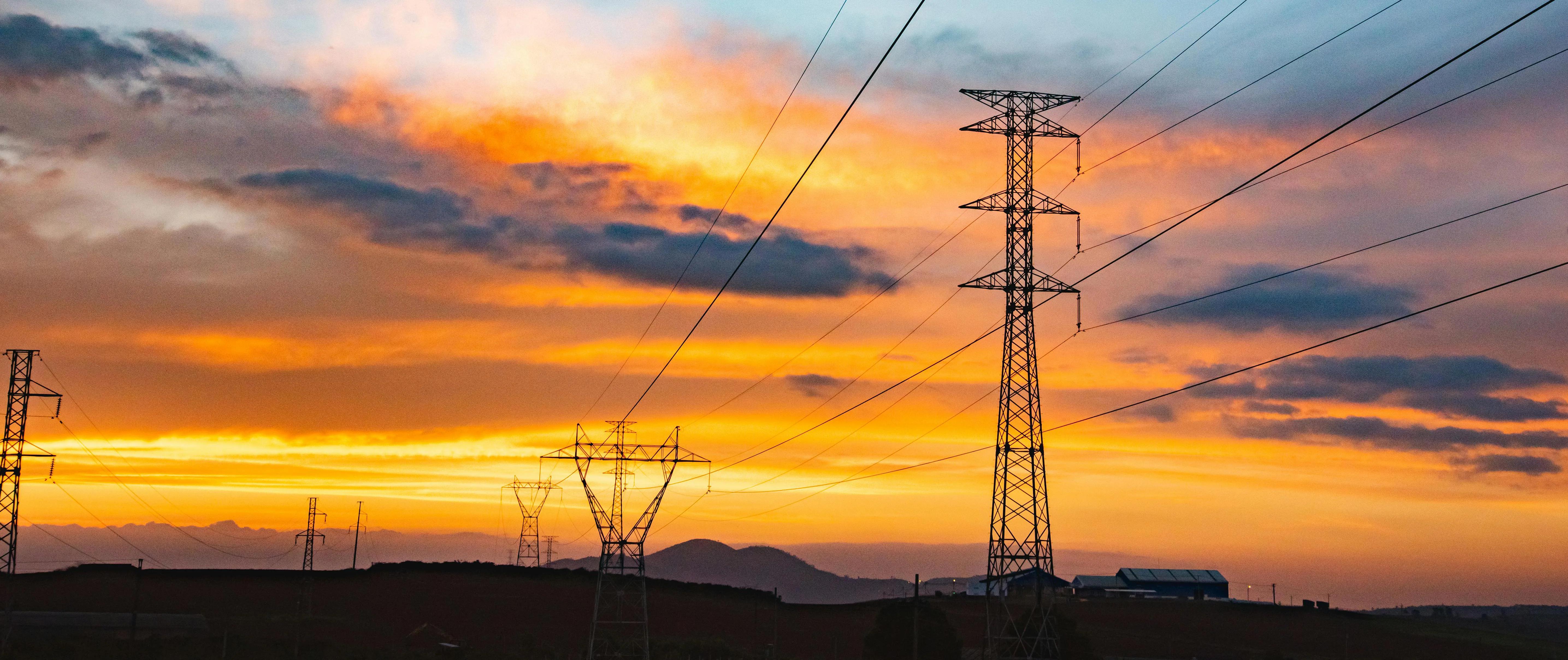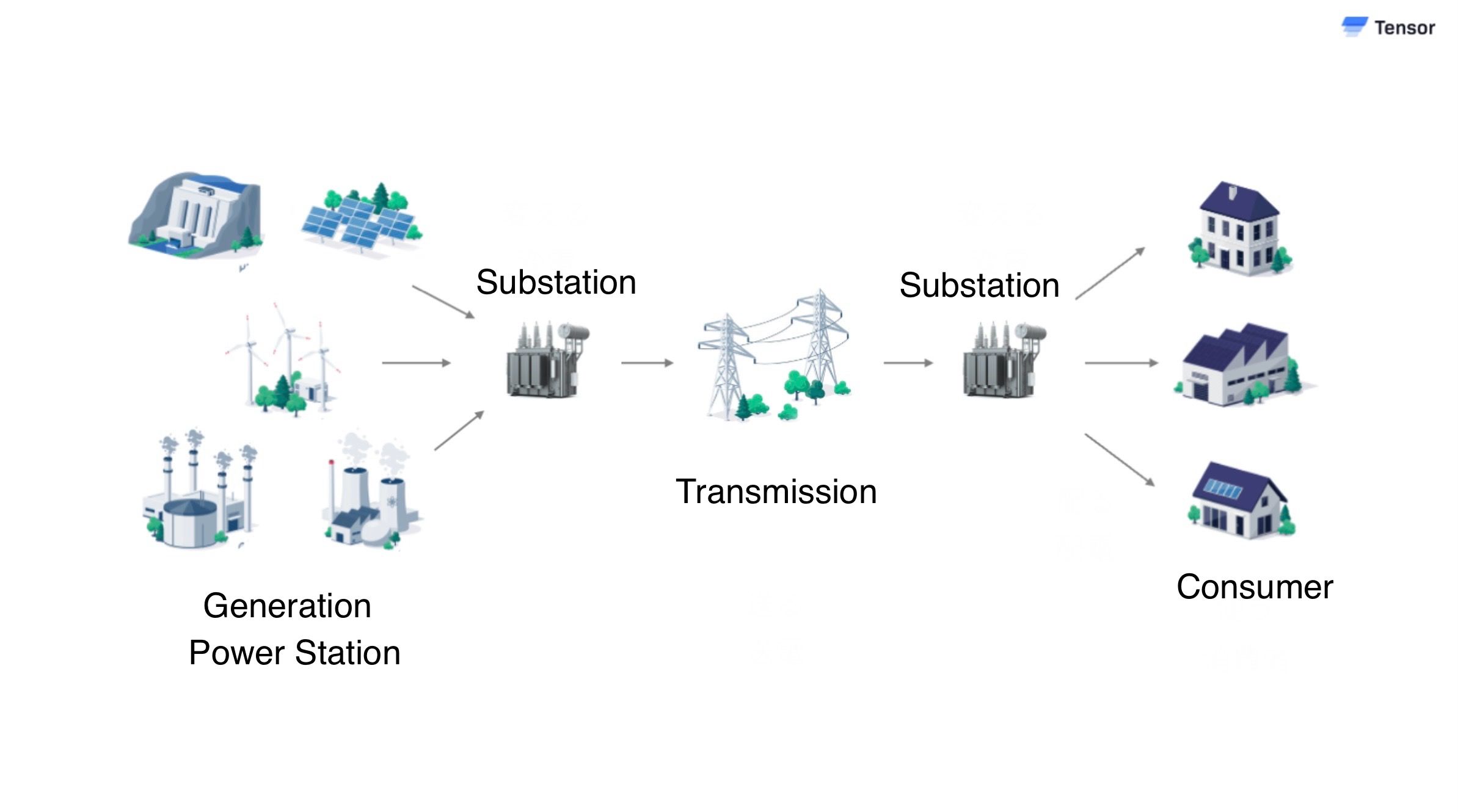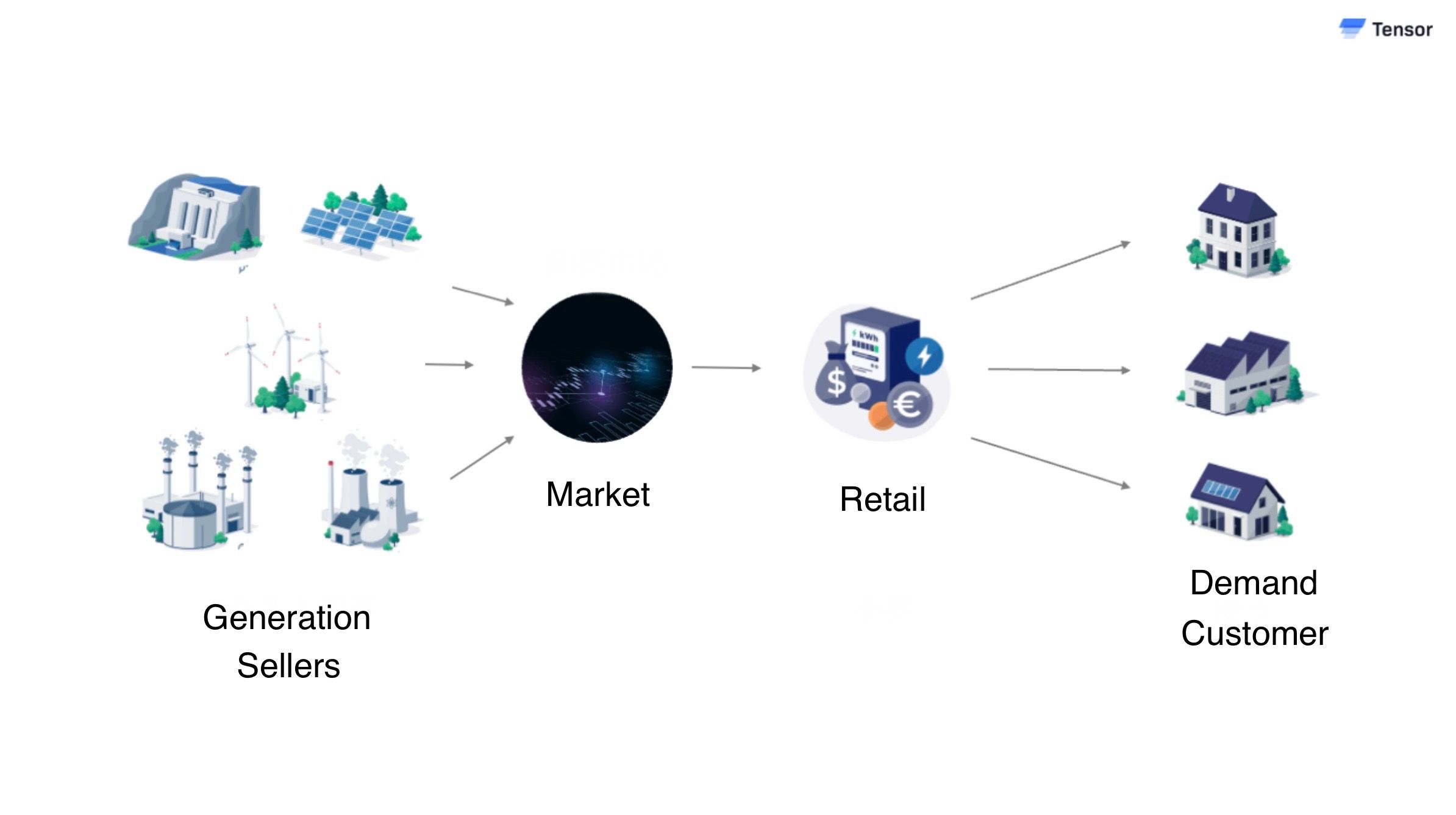
Understanding the Power Grid: Electricity Distribution and Delivery
August 7, 2024
This article explains the basics of how electricity is distributed from power plants to households, commercial buildings, factories, and more, through a system known as the "Power Grid."
Power System Overview
The power grid operates through two main processes: "power transmission" and "power distribution." Power transmission is the initial phase, where electricity generated at power plants is transferred to substations. Since the voltage produced at power plants is too high for direct use in homes or businesses, it is reduced at substations. Following this, the process shifts to "power distribution," where the electricity is sent from substations to end consumers via electrical wires.
Substations
Substations are critical to the power grid as they bridge the processes of transmission and distribution. Electricity from various power plants—such as natural gas, wind, and solar facilities—is directed to substations. Large power plants are typically located in rural areas, requiring energy to be transmitted over long distances to areas of consumption. During transmission, high-voltage lines are used to minimize energy loss, and these lines are kept elevated to avoid contact.
As electricity approaches urban centers, the risk associated with carrying high-voltage power increases. Therefore, substations are strategically placed to gradually step down the voltage, making it safer and more suitable for delivery to consumers. This process ensures that electricity can be safely and efficiently supplied to households, businesses, and industrial users.
Exhibit 1

Power Station to Consumer Connection
The power grid can be likened to a marketplace for electricity, where power stations act as sellers, substations as distribution centers, and consumers as buyers. This analogy illustrates the flow of electricity from its generation at power plants, through substations, and finally to end users such as households and businesses. The actual electricity market, where generators sell electricity to wholesalers or retailers, will be discussed in more detail in a separate article.
Exhibit 2

Grid Balancing
A fundamental principle of electricity supply is "grid balancing," which ensures a stable match between energy supply and demand. Unlike other commodities, electricity cannot be easily stored, meaning that the power being consumed at any moment must have been generated just seconds earlier. This delicate balance is managed by Transmission System Operators (TSOs), who predict electricity usage patterns and adjust the supply accordingly. TSOs coordinate with power plants to ensure that the right amount of electricity is produced to meet real-time demand. However, the growing use of renewable energy, particularly solar and wind, is introducing new complexities to this balancing act.
Challenges with Renewable Energy
Renewable energy sources such as solar and wind, while environmentally beneficial, present challenges for maintaining grid balance. Traditional power plants can adjust their output to match demand, but renewable energy depends on variable factors like weather and time of day, leading to potential mismatches between supply and demand. For example, solar panels generate electricity during daylight hours, while peak electricity consumption often occurs in the evening. This can result in either an oversupply when demand is low or an undersupply when demand is high, risking grid instability.
To mitigate these issues, engineers are developing energy storage solutions, such as battery systems, which store excess electricity produced during periods of high generation and release it when demand increases. Additionally, advanced technologies and improved grid management strategies are being implemented to enhance the integration of renewable energy, ensuring a stable and reliable electricity supply despite the inherent variability of these sources. These innovations are crucial for maintaining a consistent and balanced power grid as the share of renewable energy continues to grow.
Tensor Energy
At Tensor Energy, we develop advanced technologies to enable electricity generators to use the power grid more efficiently. Our cloud platform utilizes AI and machine learning to optimize grid operations and facilitate the integration of renewable energy sources. By improving grid efficiency, we support a more sustainable and reliable electricity supply. Understanding the fundamentals of the power grid and the challenges of renewable energy integration underscores the need for cutting-edge solutions in this space. Technologies like ours are vital for maintaining a stable and sustainable energy future.
Authors

Hina Susanna Hayashi
Marketing Intern